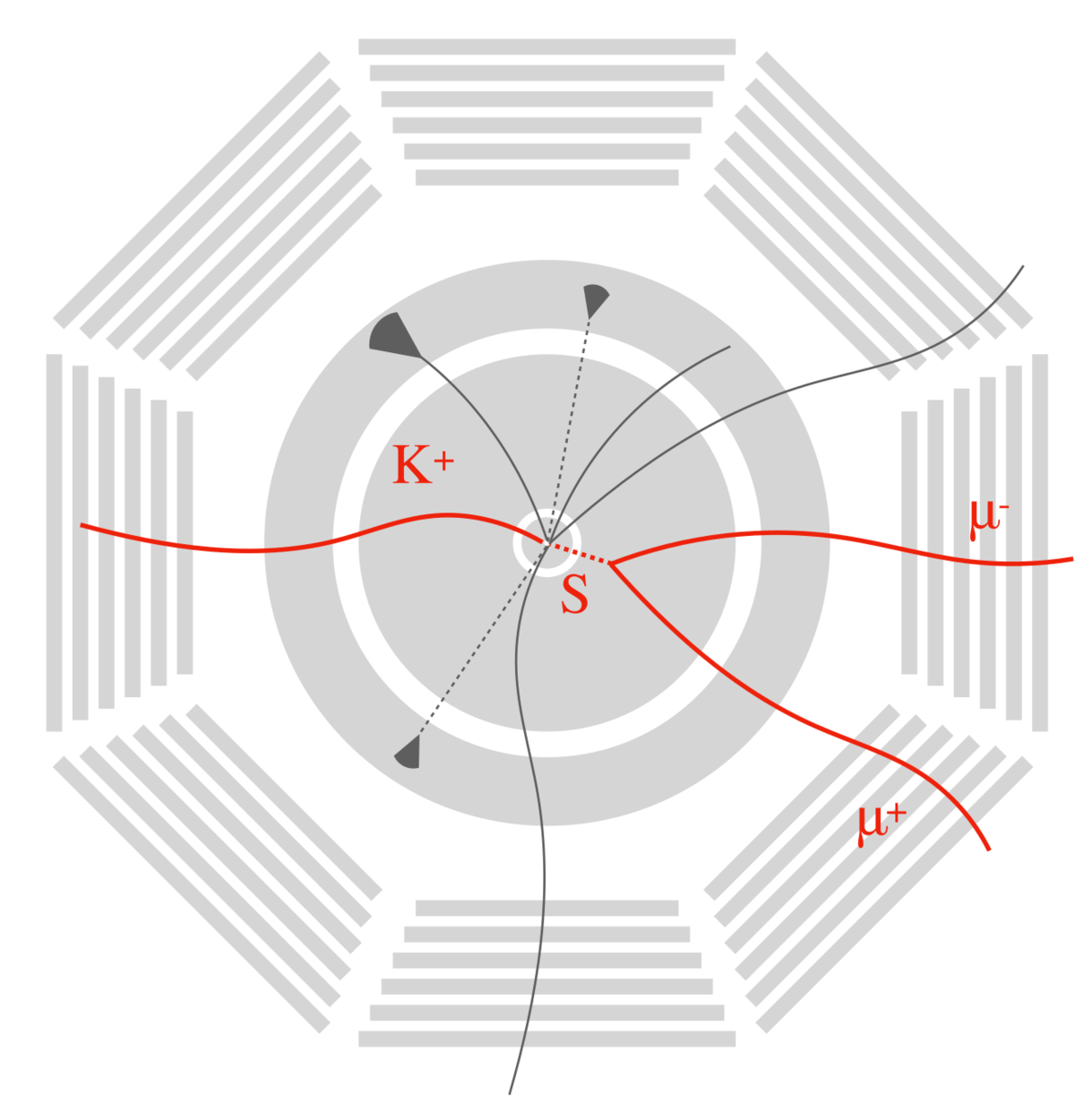First search for long-lived particles at Belle II: Cornering the Dark Higgs
For the first time, scientists have used the Belle II experiment at Japan's KEK Research Center to search for long-lived particles. In a paper submitted today to Physical Review Letters, they report on the search for long-lived particles that could provide explanations for the nature of mysterious dark matter (preprint).
ETP researchers have used data collected from 2019 to 2021 by the Belle II experiment at the SuperKEKB accelerator in Japan to search for evidence of dark Higgs particles. SuperKEKB collides 7-GeV electrons and 4-GeV positrons to produce about 200 million B-meson pairs that will be used for this analysis. Researchers have selected the events that contain a particle pair with oppositely charged particles that appear out of nowhere at a considerable distance from the interaction point, as well as a charged or neutral K meson: the "smoking gun" signature from b-quark decays to the Dark Higgs.
Unfortunately, the search has not yet yielded any evidence for the existence of dark Higgs particles. However, these results allow theoretical physicists to constrain possible models that attempt to explain physics beyond the Standard Model, such as dark matter.


